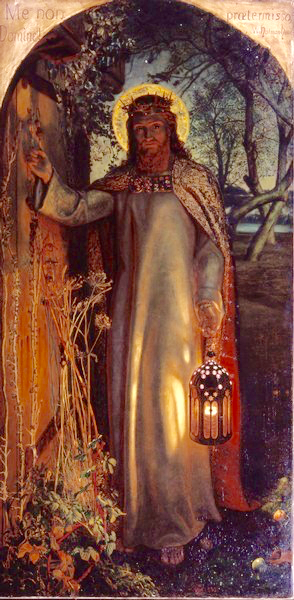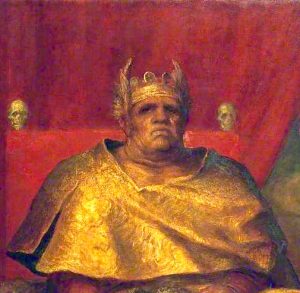
In this post, I explore the role of Christ as light-bearer – one who shines in order to dispel darkness. We consider the need for the church to be more self-critical in response.
Holman Hunt’s famous image, Light of the World, is often interpreted as Christ knocking at the door of an unresponsive human heart — a wooden door overgrown with weeds and with no visible external handle. The metaphor is clear. The image, however, raises pertinent questions regarding both subject and object.
Regarding the subject, Hunt’s portrayal of Christ (as a Westerner) dressed in rich, flowing, almost middle-Eastern kingly robes hints at his divine role as the King of Kings. His messianic role and divine nature are reinforced by a jewelled circlet hinting at a crown of thorns and a head haloed by a rising moon. The dark garden scene is reminiscent of an unoccupied Eden. Instead of tending the garden of the world, the soul is barricaded within its own alternative, self-preoccupied reality. A kind of garden shed. Continue reading “Is the light of Christ being excluded from the church?”

